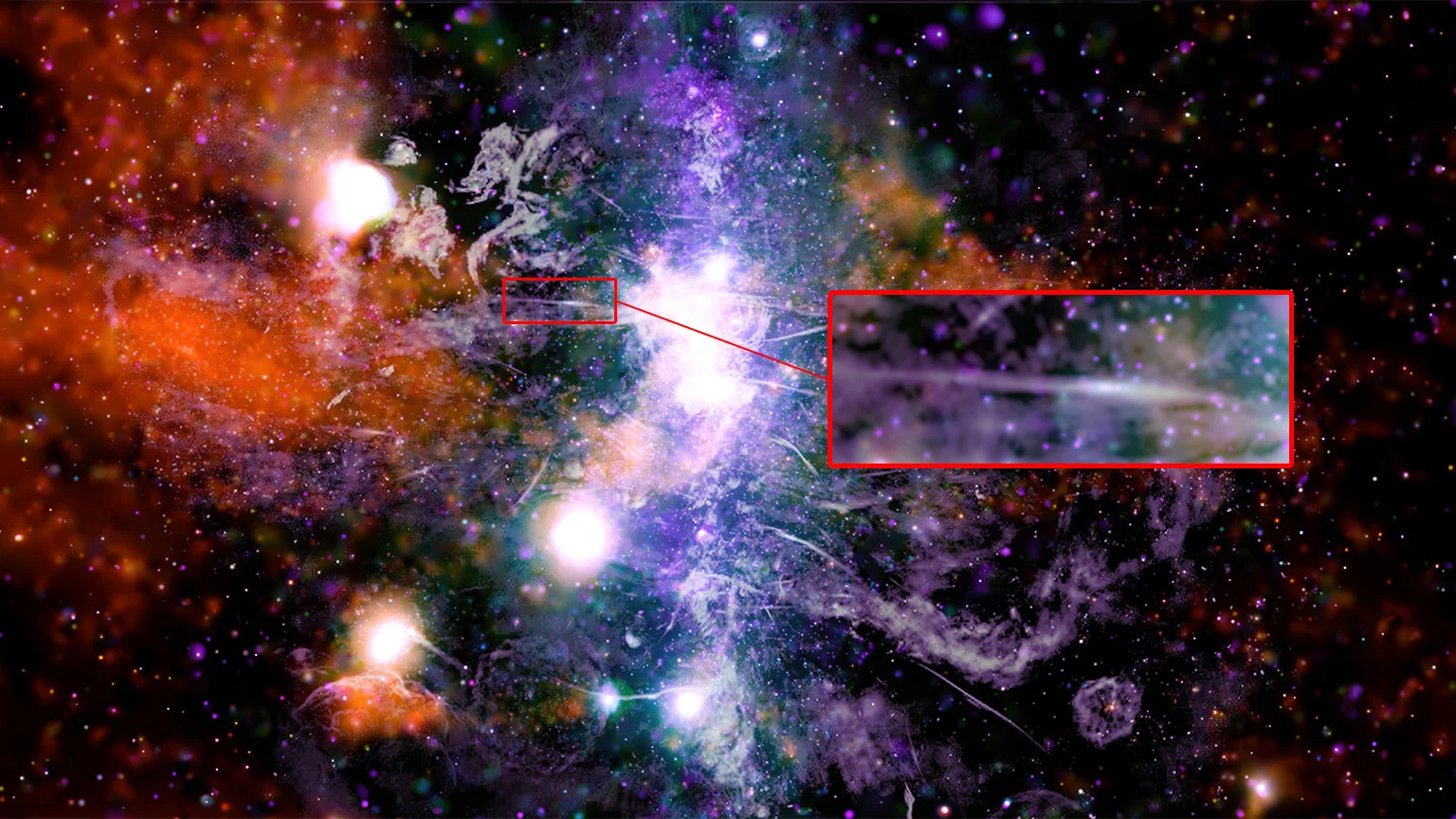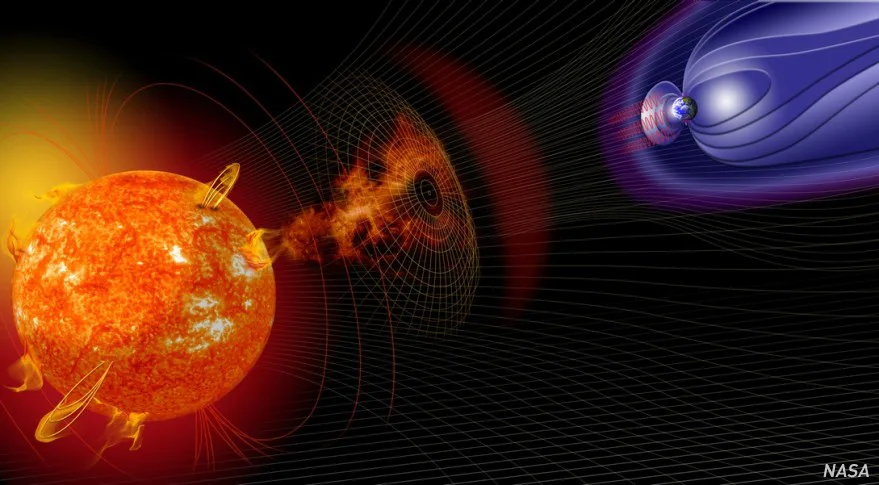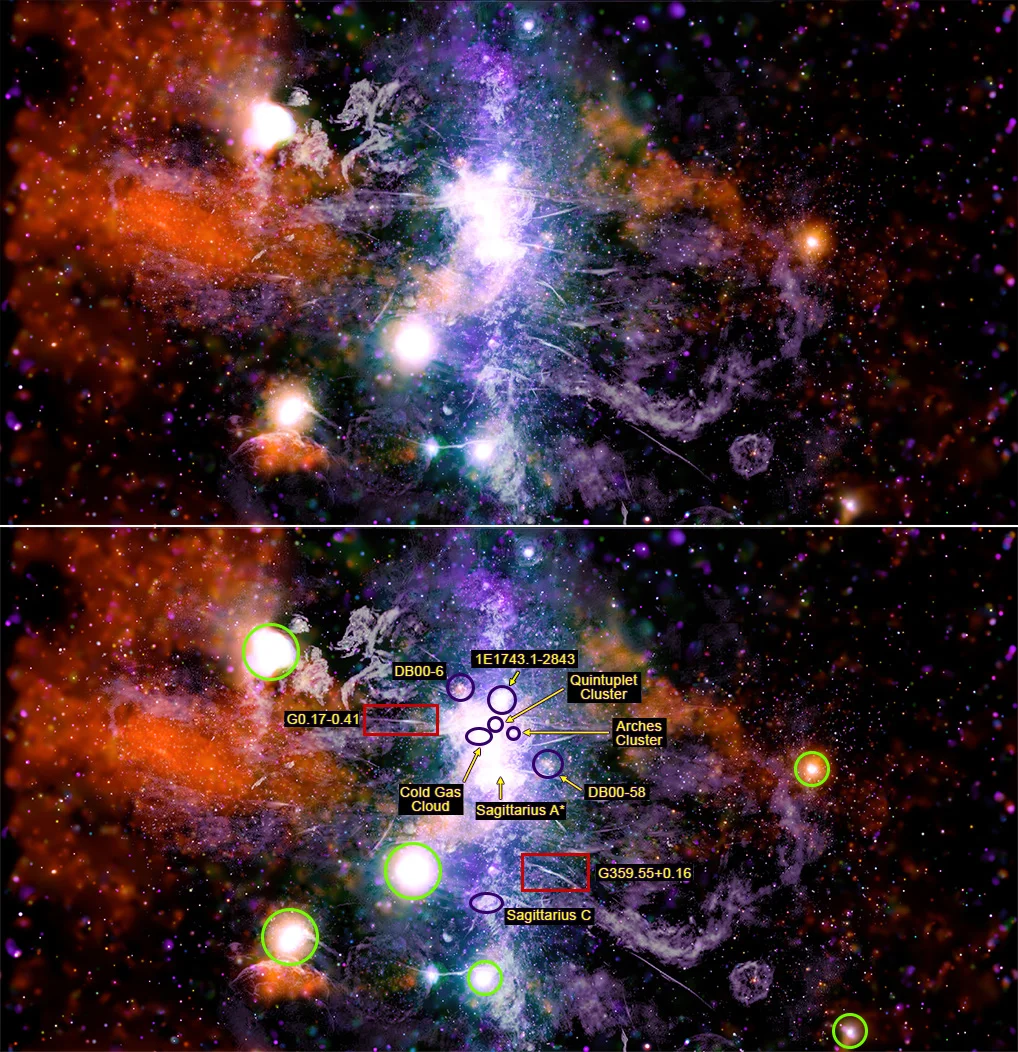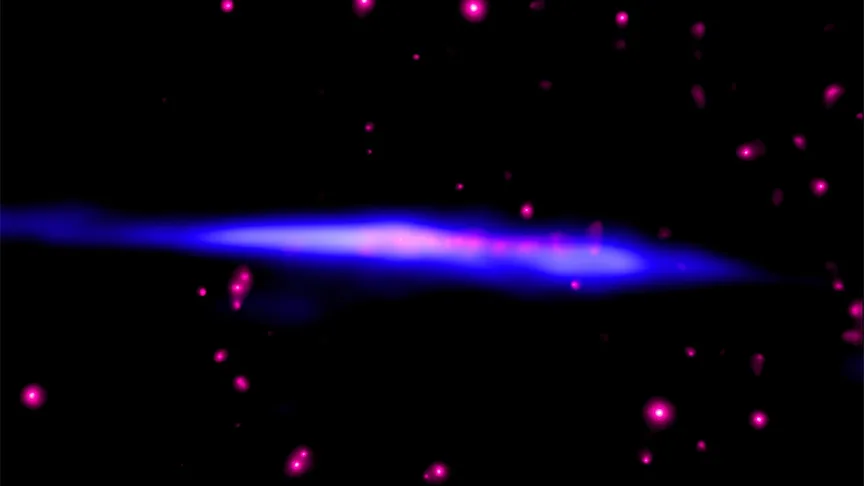
New photo reveals 'violent energy' of space weather in our galaxy's core
Galactic 'space weather' may play a role in the birth of stars, and it could be responsible for high energy cosmic rays that strike Earth's atmosphere.
Peering into the heart of the Milky Way, an astronomer has unveiled a new panorama of the galactic core, showing off the region's 'violent energy' in never-before-seen detail. This new view also reveals one feature that may result from the same phenomenon that causes solar flares and auroras here in our own solar system.
Here on Earth, we experience 'space weather' due to the solar wind and explosions and eruptions from the Sun's surface, known — respectively — as solar flares and coronal mass ejections. At the very least, these phenomena can produce spectacular auroras, which we call the Northern and Southern Lights. They can also disrupt radio and satellite communications. Stronger events can even cause power blackouts due to their impact on Earth's magnetic field.
The basis for these phenomena and their impacts is a concept known as magnetic reconnection.

The various phenomena of space weather, from solar flares to coronal mass ejections to auroras. Credit: NASA
The Sun is essentially a giant fusion reactor, which powers a ball of superheated, magnetically charged matter around it, known as plasma. When small bundles of this plasma clump together inside the Sun, they generate their own local magnetic fields. If these discrete clumps get pushed up against one another, their magnetic fields tend to get tangled. When this happens, the magnetic field lines can snap apart and reconnect, reorganizing the whole chaotic jumble. This is magnetic reconnection.
When immense solar magnetic fields (several times larger than the Earth) reconnect like this, it releases intense bursts of energy. These are what we call solar flares, and they accelerate solar particles out into space. Reconnections occur in Earth's magnetic field, as well. These are not violent enough to cause flares, like on the Sun. They have their own spectacular results, however, as they spark vibrant auroral displays.
While these phenomena are all local to our solar system, there are also forms of galactic space weather, especially in the galactic core.
"This weather is driven by volatile phenomena such as supernova explosions, close-quartered stars blowing off hot gas, and outbursts of matter from regions near Sagittarius A*, our Galaxy's supermassive black hole," says NASA.
New observations using two telescopes — NASA's space-based Chandra X-ray Observatory and the MeerKAT radio telescope in South Africa — have revealed these galactic-scale phenomena in amazing detail.

These two panels show a combined X-ray view from Chandra and the radio observations from MeerKAT, with the lower panel annotated to reveal the various important features of the view. X-rays detected by Chandra are shown in colours of orange, green, and purple, based on their energies. Radio data from MeerKAT is shown in gray. Credit: X-ray: NASA/CXC/UMass/Q.D. Wang; Radio: NRF/SARAO/MeerKAT
Of particular interest here is the object in the red box to the upper left of centre. Named G0.17-0.41, this filament of interstellar plasma shines brightly in both radio emissions and x-rays. According to NASA, it is close to 200 trillion kilometres long (around 20 light years) but is only a hundredth of that distance wide.
In a new study based on these observations, University of Massachusetts Amherst astronomer Daniel Wang suggests that the energy source for these emissions is from the galactic space weather around the core.
"This thread reveals a new phenomenon," Wang said in a UMass Amherst press release. "This is evidence of an ongoing magnetic field reconnection event."

This close-up view of x-ray thread G0.71-0.41 is a composite of Chandra x-rays (pink) and MeerKAT radio (blue), showing how the immense string of interstellar gases glows brightly at both wavelengths. Such strips may have formed when magnetic fields aligned in different directions, collided, and became twisted around each other in a magnetic reconnection. Credit: X-ray: NASA/CXC/UMass/Q.D. Wang; Radio: NRF/SARAO/MeerKAT
According to NASA, this new research shows immense plumes of hot gas, extending for hundreds of light years above and below the galactic plane. These represent galactic-scale outflows of matter, driven by processes similar to how magnetic reconnections accelerate particles away from our Sun.
"The gas is likely heated by supernova explosions and many recent magnetic reconnections occurring near the center of the galaxy," NASA said. "Such reconnection events in the Galaxy are normally not sufficiently energetic to be detected in X-rays, except for the most energetic ones at the center of the Galaxy, where the interstellar magnetic field is much stronger."
Based on this research, magnetic reconnection events may have a role in heating the interstellar gases that float between the stars and could be part of the process that kicks off the birth of new stars. They could also account for the powerful interstellar or intergalactic cosmic rays that astronomers detect, as reconnection events accelerate particles to fantastic speeds and fling them out into deep space.











